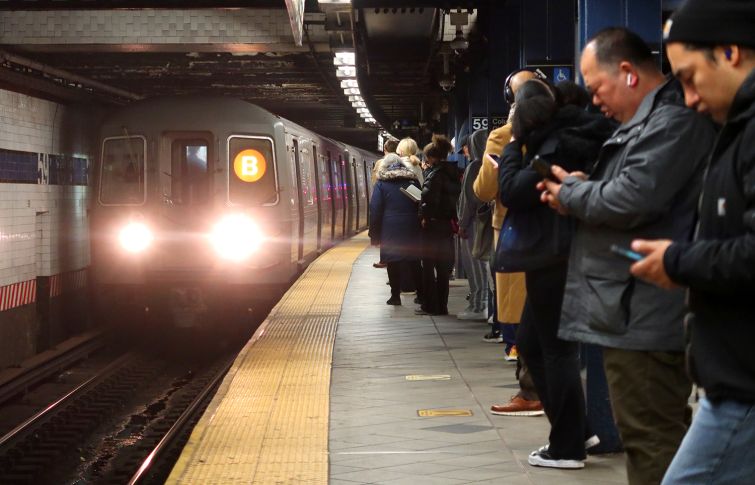MTA, Hochul to Fortify Transit System Against Climate Change With $6B Investment
By Mark Hallum April 26, 2024 1:29 pm
reprints
Lord willin’ and the sea level don’t rise, New York State is looking to address endemic flooding of New York City subway stations by dropping $6 billion on climate change investments.
The Metropolitan Transportation Authority and Gov. Kathy Hochul plan to commit the money over the next decade to protect the city’s transit infrastructure from the effects of climate change, including the propensity for flooding in tunnels and stations during heavy rainstorms.
“Transit is the antidote to climate change, which is why we have to preserve and improve New York’s amazing subway, bus and commuter rail systems,” MTA chair Janno Lieber, a former Silverstein Properties executive, said in a statement Thursday. “But our transit system is still vulnerable to the effects of climate change, so we need to execute on this visionary resiliency plan, which has been designed to ensure the reliability and safety of New York’s transit system for years to come.”
The MTA will have additional funding for transit improvements through congestion pricing, a $15 charge on most standard vehicles entering Manhattan below 60th Street that is expected to begin in June and will provide funding for infrastructure improvements.
It’s unclear if funding from congestion pricing will be allocated to these specific climate initiatives, however.
Through what it is calling the “Climate Resilience Roadmap,” the MTA and the Hochul administration laid out 10 goals aimed at some of the biggest challenges the system faces.
Those goals include the construction of raised steps and elevated street vents to prevent stormwater from pouring into below-grade stations when torrential rain hits the region, which could keep commuters dry and ultimately lead to fewer videos of MTA customers wading through water to get out of a subway station.
A greater investment in drainage and pumping equipment could also prevent train service disruptions because of flooding on the tracks, according to the MTA.
In flood-prone subway yards and bus depots, equipment at risk of being damaged by water will be elevated above expected flood levels, especially to protect gear that is needed during those weather events.
Threats to MTA bridges include metallic components expanding during heat exposure.
The state is also looking to protect portions of regional rail lines like the Metro-North and the Long Island Rail Road that are at risk from tidal flooding and sea-level rise, according to the state.
Mark Hallum can be reached at mhallum@commercialobserver.com.


